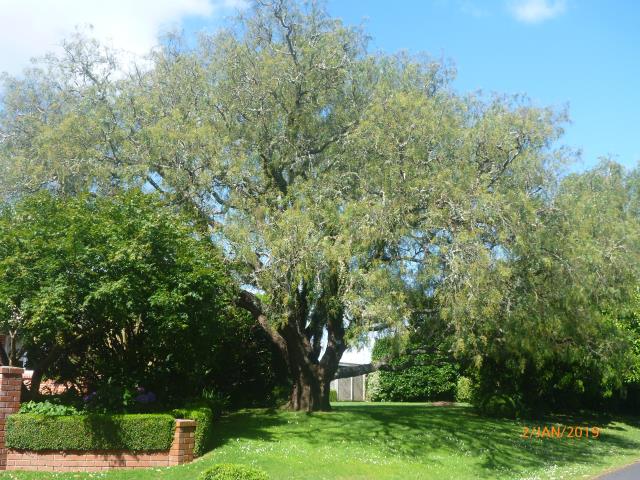
Peruvian pepper tree (Schinus molle)
This lovely specimen in Hemans Street was once on the Protected Tree list but has recently been delisted. Schinus molle is native to southern and western parts of South America, the dry regions of the Andes. In really hot, dry positions in sandy or stony soil it will be no more than a large bush, but on dry river beds where underground water is available it may grow to 15 metres in height, with a delicate weeping crown similar to this Leamington tree. It tolerates both salinity and alkalinity, and near the equator is found at altitudes up to 3900 metres.
It was traditionally used by the Inca people for textile dyeing and for embalming the dead, and also as a source of food. The essential oils in the leaves were used as a peppery spice in baking and candy, and the pink seeds were, and still are, often used as a pepper substitute. The ripe berries were used to make a drink, or mixed with maize to make a thick gruel. Even before the Inca, the Chicha people fermented the berries to make an alcoholic liquor, now called capaloclea.
The tree also has a long medicinal history as a source of anti-bacterial, anti-fungal and anti-depressant medicines. The bark, with diuretic and astringent properties, was used to treat diarrhoea, inflammation and tumours, and when heated the gum from the bark could be chewed as a purgative and digestive aid. The leaves served as a stimulant, an insect repellent, and a treatment for rheumatism.
Today in South America Schinus molle is often used for soil conservation, offering both erosion control and increased soil fertility from the 25% of its leaves which fall each year.

